Wood ducks are colorful birds native to North America. They are also known as Carolina ducks. These waterfowl have bright patterns and coloration, but only the males have beautiful plumage. Like many other bird species, the females are much more demur and bland-looking than the males. Read on to learn about the wood duck.
Description of the Wood Duck
Wood ducks are small/medium-sized birds. They do not exceed two feet long, and have a wingspan less than two and a half feet across. In comparison, mallards make them look like dwarves.
The most notable characteristic of this species is their beautiful feathers. Male wood ducks have bright colors and patterns with an iridescent sheen to them. These birds are arguably the most colorful waterfowl in North America.
Interesting Facts About the Wood Duck
While these ducks are beautiful, they are also well adapted for their aquatic lifestyle. Wood ducks have a number of interesting traits and adaptations that help them survive.
- Bright Boys – The evolution of bright colored plumage and distinct patterns in male birds is not an uncommon occurrence. Some types of birds, like the bird of paradise, take this to an extreme! Scientists believe the birds with the brightest colors and prettiest plumage are more attractive to females.
- More Than a Pretty Face – Of course, the pretty colors are not the real reason male wood ducks are so successful. Females choose the brightest and most stand-out bird not because they like the colors, but because they are the most fit for survival. Only the cleverest and most athletic birds can survive with bright colors, because it makes them much more conspicuous to predators!
- Comeback Kid – Sadly, this brightly colored plumage did not always ensure healthy chicks. Humans took notice of the pretty feathers, and decided that they would look better on a hat than they would on a bird. Hunting pressed these birds to the brink of extinction during the 19th century. Thankfully, added protections have helped these birds bounce back successfully.
Habitat of the Wood Duck
Like most waterfowl, wood ducks like to live in close proximity to fresh water sources. They are most populous in swamps, marshes, ponds, small lakes, creeks, and other aquatic environments.
Tree cavities are especially important, as the birds nest off the ground in them. Because of this, nest boxes provided in wetland environments have helped give these birds a boost.
Distribution of the Wood Duck
Wood ducks have different ranges based upon the seasons and regions they live in. In the southern United States, from Texas east to the coast, the birds are year-round residents. The seasons are warm enough to sustain the birds without migrating.
In the northern United States, and parts of southern Canada, the birds breed in the summertime. These populations spend winter in Texas and the surrounding areas, as well as western Mexico. A year-round population also lives along the coast of the western United States.
Diet of the Wood Duck
Though they are mostly herbivorous, wood ducks are omnivores. Contrary to the behavior of most waterfowl, which spend their time tail-up eating aquatic vegetation, wood ducks forage on land. Their favorite foods are seeds, berries, acorns, and insects. They will forage for insects in shallow waters, but also search for them on land as well.
Wood Duck and Human Interaction
Historically, humans hunted wood ducks extensively. Hunters pressed the birds into a sharp decline, but thankfully the introduction of the Migratory Bird Act gave them some reprieve from this pressure.
While hunters can still legally hunt them, there are now limits on the number of birds each person can legally collect. Unlike some waterfowl, like the Canada goose, many landowners actually encourage the presence of wood ducks. They are not destructive, and do not adversely impact the environment.
Domestication
Humans have not domesticated wood ducks in any way.
Does the Wood Duck Make a Good Pet
It is illegal to own a wood duck as a pet. They are a protected species, and you cannot harm, harass, or keep them without special federal and state permits.
Wood Duck Care
In a zoological setting, wood ducks are very successful. Their diets are easy to replicate, and zookeepers can provide them with nest boxes and breed successfully in captivity. The beautiful birds are always favorites of the public, and they are much more docile than some other waterfowl. They are skilled at flying, and zookeepers must keep them in a secure enclosure.
Behavior of the Wood Duck
While they are reliant on their aquatic environment, wood ducks are also reliant on trees and vegetation. They have sharp claws that can grip tree branches. This allows them to perch in trees, something that many species of waterfowl cannot do.
Pairs choose a suitable nesting location, and remain nearby. In some regions, the birds will migrate south for the winter, while in other locations they will stay in their territory year-round.
Reproduction of the Wood Duck
A pair of wood ducks must find a tree hollow to use as a nest, or a human-installed nest box. They use their own feathers to line the inside of the nest to cushion the eggs.
The female duck lays anywhere from 7 to 15 eggs in the nest, and incubates them for 30 days. The newly hatched ducklings must climb out of the nest and jump from the tree. The mother calls to her ducklings to encourage them to jump, and leads them to the water.


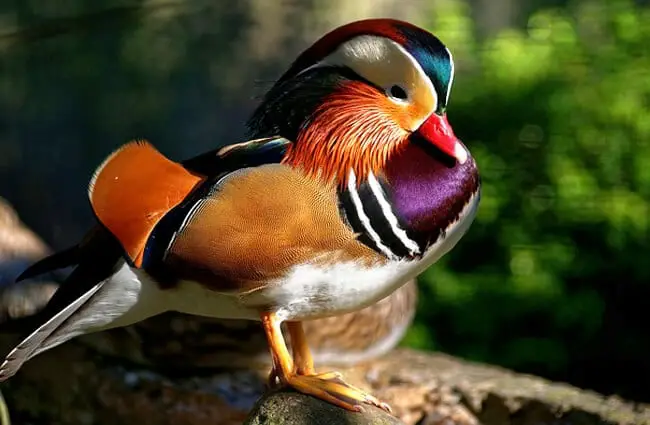
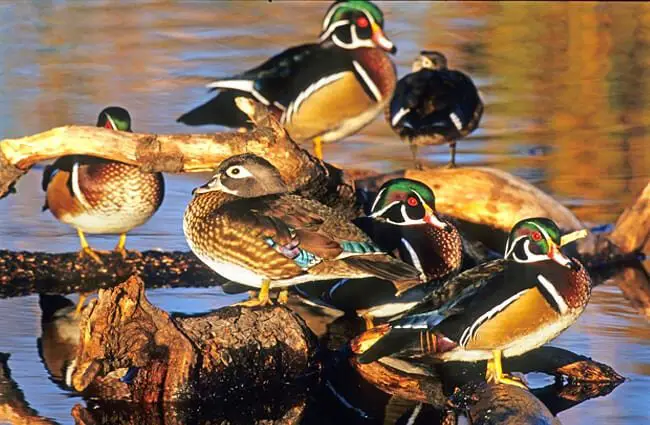

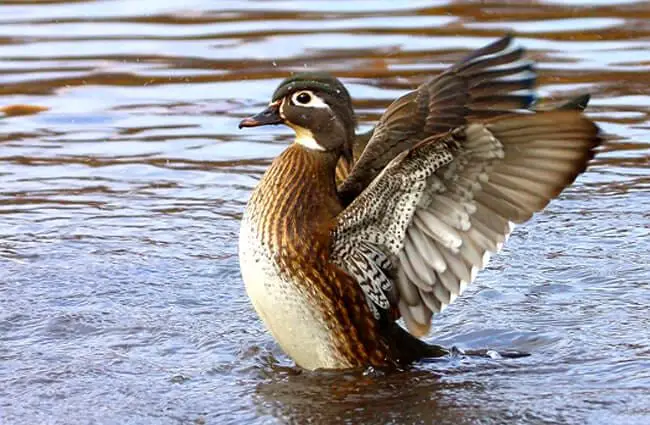


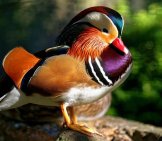
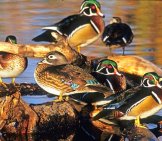
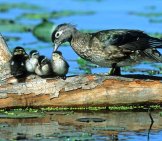


![Red Angus Closeup of a beautiful Red Angus cowPhoto by: U.S. Department of Agriculture [pubic domain]https://creativecommons.org/licenses/by/2.0/](https://animals.net/wp-content/uploads/2020/03/Red-Angus-4-238x178.jpg)












![Red Angus Closeup of a beautiful Red Angus cowPhoto by: U.S. Department of Agriculture [pubic domain]https://creativecommons.org/licenses/by/2.0/](https://animals.net/wp-content/uploads/2020/03/Red-Angus-4-100x75.jpg)

